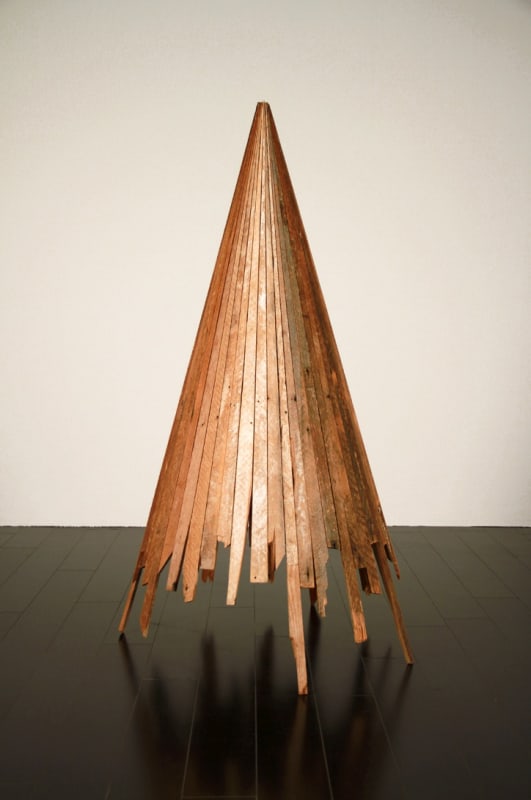San Francisco Sculptor, Andy Vogt, 46, who was educated as a multimedia artist at Carnegie Mellon University and worked as an architectural model maker and set builder in the Bay Area, now regularly check the contents of trash bins.
In doing that, he has a goal. He’s looking for discarded Victorian- and Edwardian-era hardwood lath that was used as backing for plaster walls.
A bout 10 years ago when Vogt arrived in the Bay Area, a building and remodeling boom was underway and bins were overflowing with such debris.
“I came from Pittsburgh, Pennsylvania, where nothing seemed to change, but San Francisco that’s always around you. Change. Buildings were disappearing at an alarming rate, and old wood lath was there for the taking,” he says.
With rampant gentrification that has made it impossible for artists to find affordable housing or studio space in the city. Vogt turned his concern into an artistic opportunity. But the material he found also sparked a body of work that ranges from two-dimensional "drawings" and “sketches," all made of strips of about one-inch-wide lath grouped together, to three-dimensional sculptures and site specific installations.
“At first, I treated the lath as if it was a drawing medium like a pencil. It had a certain line weight that varied slightly in texture and width depending on the era it was manufactured in. I began to draw with it," Vogt says.
In the process, the artist took advantage of different shades of color and stains the lath had acquired naturally over time to not just render lines but also indicate light and shade.
“The forms modeled in this way with light and dark wood are sculptural to look at but they are essentially flat,"Vogt says. “My work is sculpture as drawing." Still working two-dimensionally, with mathematical precision, he layers together strips of lath from his curated collection to form two-dimensional cubes, rectangles, scaffold sand cones that have an Escher-esque quality and seem to jump forward of the surface or recede into it, depending on the angle the objects are viewed from.
Relatively recently, as a resident artist at the Headlands Center for the Arts and in his own studio in the Balboa Park neighborhood,Vogt has also explored ways to make three-dimensional objects and scaffolds that look like buildings just taking shape or being dismantled. They cast real shadows on a wall. "The " Vogt says.
For one 2012 piece called "Altered Mirror,” he selectively stripped the silvered backing of an acrylic mirror so that when alight shines through the altered plane, it creates light "shadows" or patterns of light on the wall.
Prompted by an outdoor installation he did for the Museum of Craft and Design in the Dogpatch neighborhood, Vogt now sometimes builds latticed notices and places them in the sun on stretched fabric treated with light-sensitive dye, to fix the cast shadows onto the dyed fabric. These sun prints harken back toAnna Atkins' cyanotype blueprints and later-day Laszlo Moholy-Nagy darkroom photograms of the Bauhaus school in Germany; in Vogt’s versions, the sculptures' shadows prevent the dye from adhering to the fabric, and the shadow areas remain white or lighter than the rest of the surface, which has been exposed to sunlight.
Vogts' site-specific wall works include a mural for South Park Commons, a tech incubator. Cast-concrete tiles, formed with lath strips that remain impressed in the surface of the tile-like shadows, are new designs that can be installed outdoors. All the works Vogt creates with lath represent upheaval and inevitable changes in the built landscape, which, "no matter how ephemeral it is, forms a palimpsest," he says. "Those are my themes,” Vogt adds. “My structures are also transitory and merely shadows at play."

